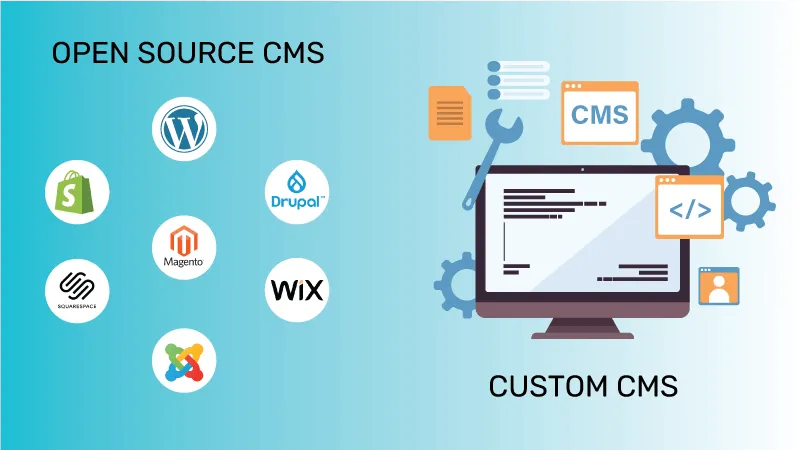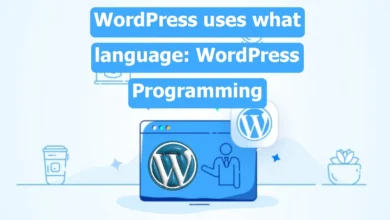What is a CMS or Content Management System? 2025

Suppose you have decided to enter the world of the Internet and launch a website. In that case, you have definitely heard of the name Content Management System (CMS). If you are looking to know what a Content Management System (CMS) is, why you should use it, and which is the best content management system for building a website? Continue reading this article to get answers to all your questions.
What is a Content Management System or CMS?
Before the entry of Content Management Systems into the world of website design, many people thought that to build a website, they had to know how to code and have a high level of technical knowledge in this field. Another problem that disappointed many people about having a website was the high cost of website design. But today, with the entry of Content Management Systems, or so-called CMSs, people’s perceptions have gradually changed, and such a problem no longer exists.
Content management systems are actually software for creating and managing content. Contrary to popular belief, these software are not necessarily web-based. Rather, web-based content management systems are simply examples of CMSs that are installed on a server. These systems are software that users can use to manage the content of their sites. In fact, these CMSs made everyone’s dream of having a site possible. For this reason, various titles are used to build a site using these systems, such as creating a site without coding or designing a website without technical knowledge.
CMSs allow users to easily create dynamic sites by entering a little information and a few simple clicks. Information in these systems is read from a database and then shown to visitors. So, using a content management system, you can easily create sites according to your needs. In fact, the most important advantage of these systems is their flexibility and customization according to the needs of the audience. WordPress, Joomla, Datalife, Drupal, Nuke, and PrestaShop are among the most common content management systems.
What features does a content management system have?
Content management systems provide users with many features. These features are included by default in content management systems. Of course, many of them are added to the content management system by installing various extensions or plugins. There are different types of CMSs, and they all have different capabilities. Of course, some of these features, such as creating text posts, updating content, etc., are common to all of them. Some of the features and capabilities of CMSs include:
- Creating text, image, and video content
- Updating published content
- Link building on the site
- Optimizing the site and its content for SEO
- User management
- Connecting to banking portals
- Creating online stores
- Providing various reports of site statistics
- Customize the site’s features and appearance
- Storing site information
- Managing information sent by users and verifying information
- Site security control and review
- And…
Introduction to different types of content management systems
There are many different types of content management systems. Of course, we can generally divide them into two categories: shared and open-source systems. In the following section, we will review and introduce each of them.
Open Source Content Management System
Open source means that the program’s source code is publicly available, and there is no need to obtain a license or pay a fee to use it. This feature makes the CMS’s source code easily available to users and developers around the world for them to review and ultimately improve.

When the source code of a CMS is accessible, users and developers can make changes to their sites. This feature is necessary when users want to customize or develop their content management system and sites. Joomla, WordPress, and Drupal are successful examples of this type of CMS.
Shared Content Management System (SAAS):
Software as a service, or SAAS for short, refers to shared service systems and software. Content management systems offered under the name SAAS have features similar to those of open-source systems. However, they differ in access to the software or system’s source code.
This means that the source code is not available to users and programmers in this type of software. Also, to use this software, a license, permit, or long-term subscription must be obtained from the companies providing those systems. One of the most popular content management systems is Wix, which is available to users for free.
Why should we use a content management system?
So far, many content management systems have been presented. Content management systems play an important role in the success of websites. Also, choosing the right CMS to enter the Internet world can quickly bring a site closer to success. However, users always have doubts about using CMSs. Because they do not know whether these systems are able to meet their needs, in order to see whether a content management system is suitable for us or not, we must have sufficient knowledge of its features, advantages, and disadvantages. Therefore, in this section of the article, we will introduce some of the benefits of CMSs.
- Easy site customization
- No need for high technical knowledge
- Quick and easy setup
- Save on website maintenance costs
- Establishing site security
- Continuous updates
- Possibility of having multiple authors
- Site support
- And….
Conclusion
Suppose you are an idea generator, business owner, content producer, etc.. Having a good website can definitely play the role of a launching pad for success. If you have ever been looking to build a site in the fastest time and with the lowest budget, a content management system can be one of the best ways to achieve your goal. By using CMSs, you can easily focus on content and site management and not worry about other technical issues. What do you think? Have you had experience working with content management systems?






